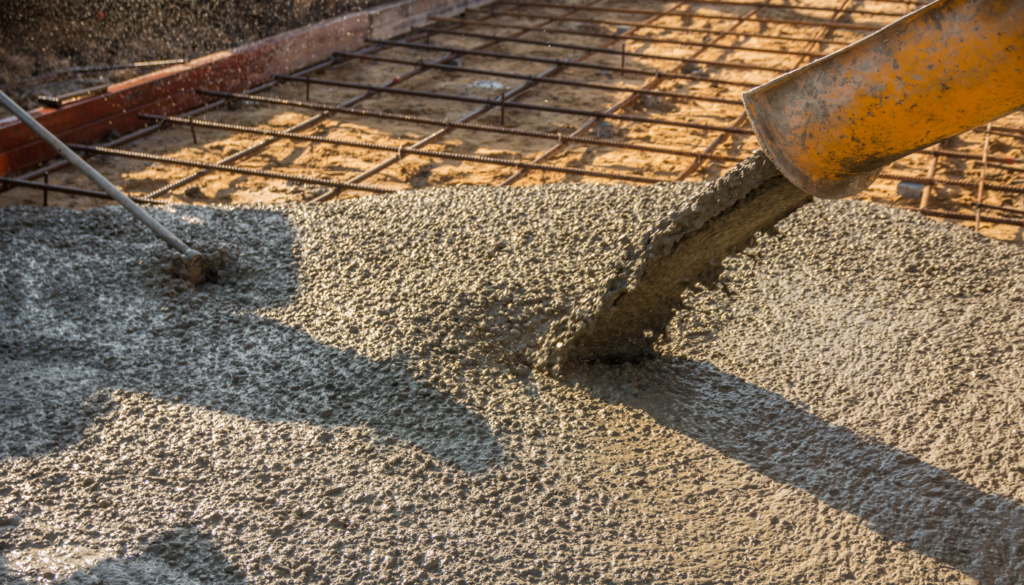
There are several reasons why concrete cracks. Some cracks may appear during the plastic state and some may appear during the hardened state. Some cracks may evolve due to the concrete itself and some cracks may be caused by other factors. Here are a few common types of cracks that may form:
Drying Shrinkage – Hardened State
During concrete placement, concrete is full of water. As the concrete cures, the water evaporates and the volume of the concrete is reduced. The greater amount of water added to the concrete, the greater the change in the volume of the concrete. This reduction in volume, A.K.A Shrinkage, creates an environment for cracking. To reduce the pulling stresses of shrinkage and control the locations of cracks, the contractor often forms joints into the concrete either by saw cutting or hand forming. These joints create a weak point in the concrete, which allows the concrete to crack at controlled locations. Also, inside corners (reentrant corners) and pipe structures tend to be potential crack locations due to the pulling stresses of shrinkage. At these locations, contractors will often add diagonal reinforcing steel.
Thermal Cracking – Hardened State
At a hardened state, concrete exposed to high temperatures will the cause the concrete to expand. Hardened concrete exposed to cold temperatures will cause the concrete to contract. These varying temperatures will cause internal stresses and tension against surrounding surfaces and can eventually lead to cracking. To reduce the stresses caused by thermal expansion and contraction, contraction and expansion joints are added.
Subgrade Settlement – Hardened State
Cracks that occur due to subgrade are often at underlying trench backfill locations. Subgrade settlement at these locations (i.e. utility trench and foundation trenches), is due to improper compaction of the backfill materials. The cracks at these locations tend to be parallel with the settlement area. Crack monitors can be applied to the crack to determine if the settlement is continuing to occur.
Crazing – Hardened State
Crazing is a network of fine cracks in a hexagonal shape. The pattern of cracks look like a map, which is why they are sometimes referred to as map cracking. Craze cracks are shallow cracks and usually do not affect the integrity of the structure. The fine cracks will appear within a few days after the concrete was placed. Typically, the reason that crazing occurs is due to improper curing, High water/cement ratio (too much water added), or finishing with bleed water on the concrete surface.
Plastic Shrinkage – Plastic State
Plastic shrinkage is caused by rapid evaporation of water from the concrete surface before the concrete has hardened. The cracks will appear on the surface during or right after the concrete has been placed and will typical appear parallel to each other. These cracks usually do not affect the integrity of the structure. However, the cracks will allow for harsh chemicals to more easily penetrate the concrete surface. Plastic shrinkage cracks most likely occur in hot weather and/or windy weather conditions. To minimize the occurrence of plastic shrinkage, the concrete should be poured in less windy conditions or by creating wind blocks. Also, the contractor should start curing procedures as soon as possible to prevent the rapid evaporation of water from the surface.
Concrete Settlement – Plastic State
Concrete settlement cracks and cracks cause by subgrade settlement are different. Concrete settlement is the settlement of the concrete itself, which is due to improper consolation of concrete during placement. When the concrete is improperly consolidated it leaves voids within the concrete itself or around the reinforcing steel within the concrete. When these voids are left within the concrete it creates weak points in the concrete, which in return creates locations for the concrete to crack. If voids are located are around the reinforcing steel, it can create a mirroring effect on the surface with cracks in line with the reinforcing steel. To prevent concrete settlement, the concrete should be properly consolidated by rodding or mechanical vibration.








